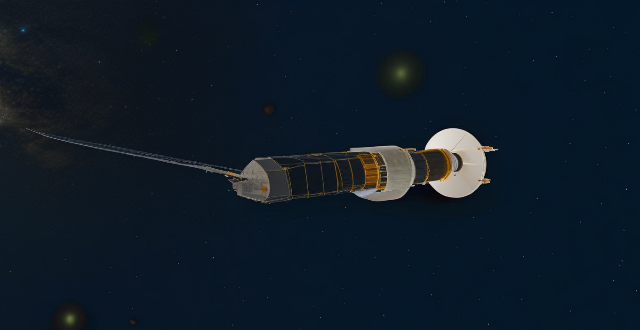The latest advancements in communication satellite technology include high-throughput satellites (HTS), low Earth orbit (LEO) satellites, and software-defined networking (SDN) and network function virtualization (NFV). HTS offers increased capacity, faster internet speeds, and improved coverage. LEO satellites provide reduced latency, improved signal strength, and global coverage. SDN and NFV enable centralized management, flexibility, scalability, and improved security. These technologies are transforming the way we communicate across the globe.

Latest Advancements in Communication Satellite Technology
High-Throughput Satellites (HTS)
High-throughput satellites (HTS) are a significant advancement in communication satellite technology. These satellites use advanced antenna designs and digital signal processing to provide higher data rates and greater capacity than traditional satellites. HTS allows for faster internet speeds, improved video streaming, and more efficient data transmission.
Key Features:
- Increased Capacity: HTS can handle more data than traditional satellites, allowing for more users to connect simultaneously without sacrificing speed or quality.
- Faster Internet Speeds: With HTS, users can enjoy faster download and upload speeds, making it ideal for high-bandwidth applications like video conferencing and online gaming.
- Improved Coverage: HTS can provide coverage to areas that were previously difficult to reach, such as remote locations or regions with limited infrastructure.
Low Earth Orbit (LEO) Satellites
Low Earth orbit (LEO) satellites are another advancement in communication satellite technology. Unlike geostationary satellites that orbit at an altitude of approximately 35,786 kilometers, LEO satellites operate at much lower altitudes, ranging from 160 to 2,000 kilometers above the Earth's surface. This proximity to the Earth allows for reduced latency and improved signal strength.
Key Features:
- Reduced Latency: Due to their lower orbit, LEO satellites have shorter signal travel times, resulting in reduced latency compared to geostationary satellites.
- Improved Signal Strength: The closer proximity of LEO satellites to the Earth means stronger signals, which can lead to better connectivity and less interference.
- Global Coverage: Large constellations of LEO satellites can provide global coverage, ensuring that even the most remote areas have access to reliable communication services.
Software-Defined Networking (SDN) and Network Function Virtualization (NFV)
Software-defined networking (SDN) and network function virtualization (NFV) are two technologies that are transforming the way communication satellite networks are managed and operated. SDN separates the control plane from the data plane, allowing for centralized management and automation of network resources. NFV virtualizes network functions, such as firewalls and load balancers, reducing the need for specialized hardware and enabling faster deployment of new services.
Key Features:
- Centralized Management: SDN enables administrators to manage and monitor network resources from a central location, improving efficiency and reducing costs.
- Flexibility and Scalability: NFV allows for rapid deployment of new services and scalability of existing ones, ensuring that networks can adapt to changing demands and requirements.
- Improved Security: By virtualizing network functions, NFV can help protect against cyber threats by isolating critical functions and implementing security measures more effectively.
In conclusion, the latest advancements in communication satellite technology include high-throughput satellites, low Earth orbit satellites, and software-defined networking and network function virtualization. These technologies offer increased capacity, faster internet speeds, improved coverage, reduced latency, and enhanced network management capabilities. As these technologies continue to evolve, we can expect even more innovations that will further revolutionize the way we communicate across the globe.